Breath in the biblical mystery of burning incense through intriguing verses and their profound spiritual significance.
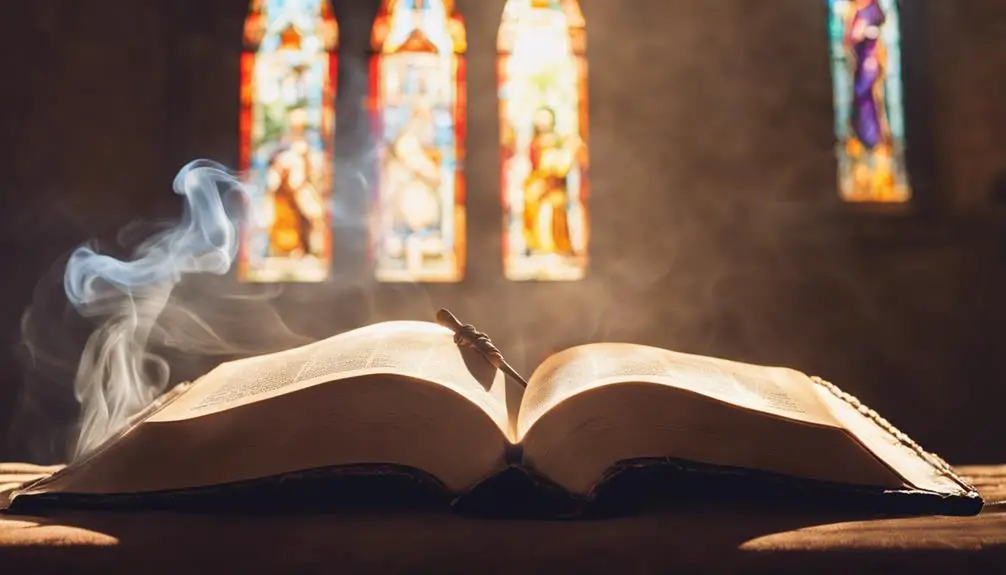
Are There Bible Verses About Burning Incense
Like a perfumer blending scents, have you ever wondered about the rich tapestry of rituals and symbols found in the Bible, and specifically, the use of incense? There are indeed several references to burning incense in both the Old and New Testaments. But what is the significance of these aromatic references? And, more importantly, what can they illuminate about our understanding of biblical texts and spiritual practices?
It's a question that's not only intriguing but might also lead you to fresh insights and perspectives. Let's embark on this fascinating journey together.
Key Takeaways
- Biblical verses like Psalm 141:2 and Revelation 5:8 associate incense burning with prayer and divine communication.
- Specific incense types, such as frankincense, hold unique symbolic meanings in biblical contexts, representing concepts like holiness.
- Incense in the Old and New Testaments, as seen in Exodus 30:34-38 and Luke 1:9-11, played crucial roles in sacrificial rituals and sanctification.
- The Bible uses incense as potent symbolism for dedication, contrition, and reverence, highlighting its spiritual significance in biblical worship.
Understanding the Use of Incense
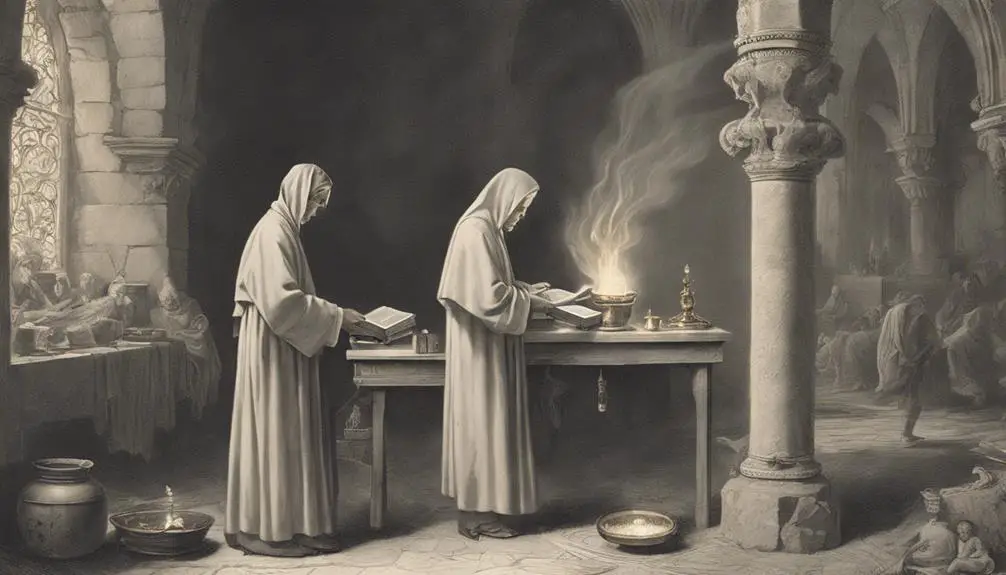
Delving into the ancient practice of burning incense, you'll find its significance is deeply rooted in Biblical narratives and rituals. The act wasn't just for aesthetic or aromatic purposes. In fact, it was a sacred ritual performed with great solemnity and reverence.
Incense was often used as a form of communication, a way to honour or seek divine intervention. It also symbolized prayer, with the rising smoke believed to carry one's prayers up to the heavens. You'll find incense was used in various religious ceremonies, serving as a conduit for spiritual connection and communication.
Historically, certain types of incense were used, each with their own significance. For instance, frankincense symbolized holiness and righteousness, while myrrh was often associated with suffering and death. The choice of incense wasn't random but chosen carefully, each type bearing a profound meaning and purpose.
Understanding the use of incense in Biblical times provides a deeper insight into the spiritual practices and beliefs of that era. While it's a seemingly simple act, it was a highly symbolic ritual that held profound spiritual significance.
Biblical References to Incense Burning
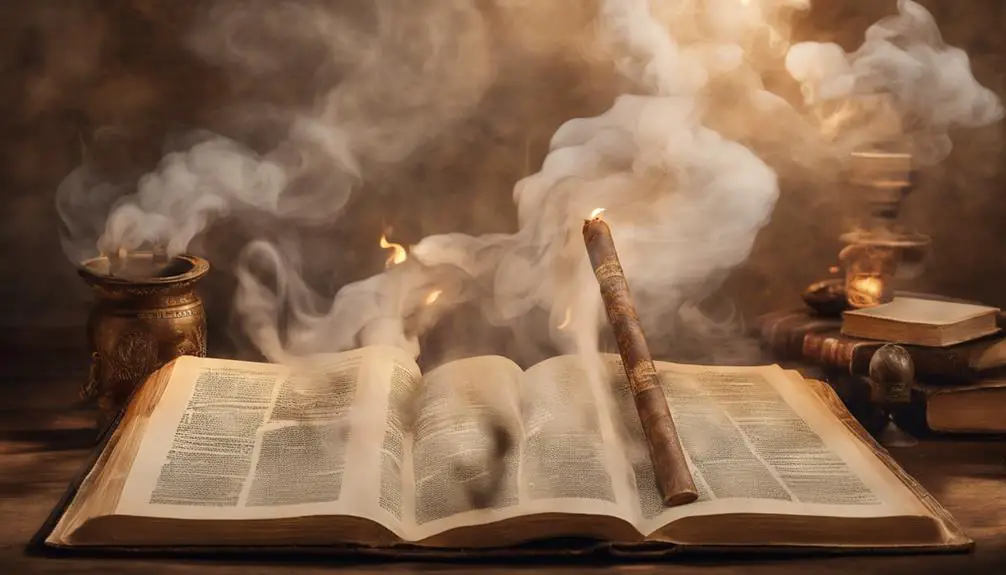
Perusing through the Bible, you'll encounter numerous references to the burning of incense, each revealing its significant role in religious rituals and divine communications. Incense burning is often linked to prayer, reverence, and sacrificial offerings, underscoring its spiritual significance.
To provide a comprehensive view, here's a table summarizing key Bible verses referencing incense burning, its symbolism, and the associated context.
Verse |
Symbolism |
Context |
|---|---|---|
Psalm 141:2 |
Prayer |
David's plea for divine attention |
Revelation 5:8 |
Prayers of Saints |
Heavenly scene of worship |
Exodus 30:7-8 |
Priestly duty |
Aaron maintaining the altar |
Luke 1:9-10 |
Divine encounter |
Zechariah in the temple |
Malachi 1:11 |
Worship |
Prophecy of universal worship |
These verses provide insight into the sacredness of incense in biblical times, showing how it permeates both Old and New Testaments, embodying spiritual metaphors. However, it's essential to understand that incense burning isn't merely historical or symbolic; it holds profound theological implications which we'll further explore in subsequent sections.
Incense in the Old Testament
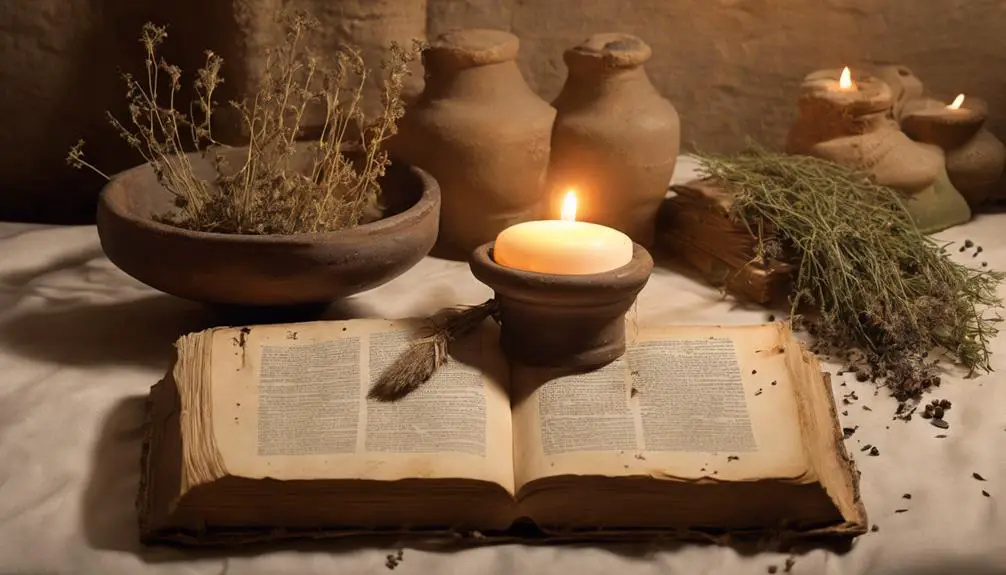
In the Old Testament, incense's spiritual significance is deeply interwoven with the fabric of religious ceremonies and divine interactions, revealing its central role in ancient Hebrew worship practices. You'll find that the burning of incense is often associated with prayer, sacrifice, and sanctification.
Examine Leviticus 16:12-13, where Aaron, the high priest, is instructed to burn incense on the golden altar before the Lord. This act veils the mercy seat with smoke, symbolizing the prayers of the people ascending to God, and protecting Aaron from death in the holy presence of Jehovah.
Also, in Exodus 30:34-38, you'll see the detailed instructions given for creating the sacred incense, a unique blend of spices, including stacte, onycha, galbanum, and pure frankincense. This composition was considered holy, and its usage outside of the sanctuary was severely prohibited.
In 1 Kings 9:25, Solomon is seen offering sacrifices and burning incense before the Lord, signifying the symbiotic relationship between sacrifice and incense.
From these instances, it's clear that incense played a pivotal role in Hebrew worship, acting as a conduit to convey prayers to God, a sanctifier of sacred spaces, and an essential component of sacrificial rituals.
Incense in the New Testament
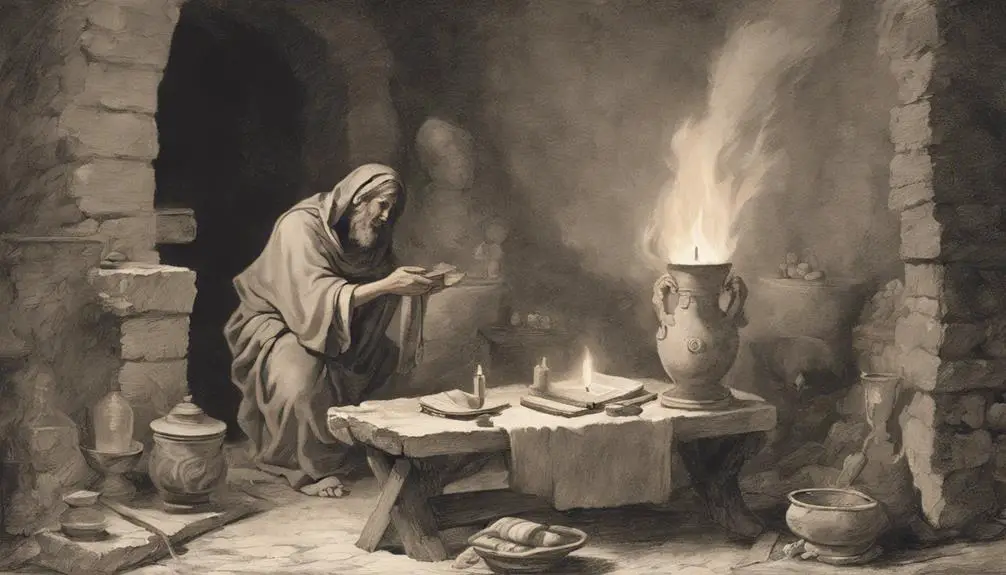
Moving to the New Testament, you'll find that the symbolic use of incense takes on a fresh dimension, expanding beyond its foundational role in Hebrew worship and sacrificial rituals. The New Testament refrains from explicitly instructing Christians to burn incense as an act of worship. However, incense appears in several significant passages.
Consider the account in Luke 1:9-11 where Zechariah, father of John the Baptist, was chosen to burn incense in the temple. As he did, an angel of the Lord appeared to him. This event underscores the sacredness of the act. Incense also appears in the vision of Revelation 8:3-4, where an angel offers it with the prayers of the saints on the golden altar before the throne of God. This depiction amplifies the symbolic association of incense with prayer in the New Testament.
Reference |
Verse |
Symbolism |
|---|---|---|
Luke 1:9-11 |
"And it came to pass, that while he executed the priest's office before God in the order of his course, According to the custom of the priest's office, his lot was to burn incense when he went into the temple of the Lord." |
Sacredness of incense |
Revelation 8:3-4 |
"And another angel came and stood at the altar, having a golden censer; and there was given unto him much incense, that he should offer it with the prayers of all saints upon the golden altar which was before the throne." |
Incense associated with prayers |
Interpretations and Symbolism of Incense
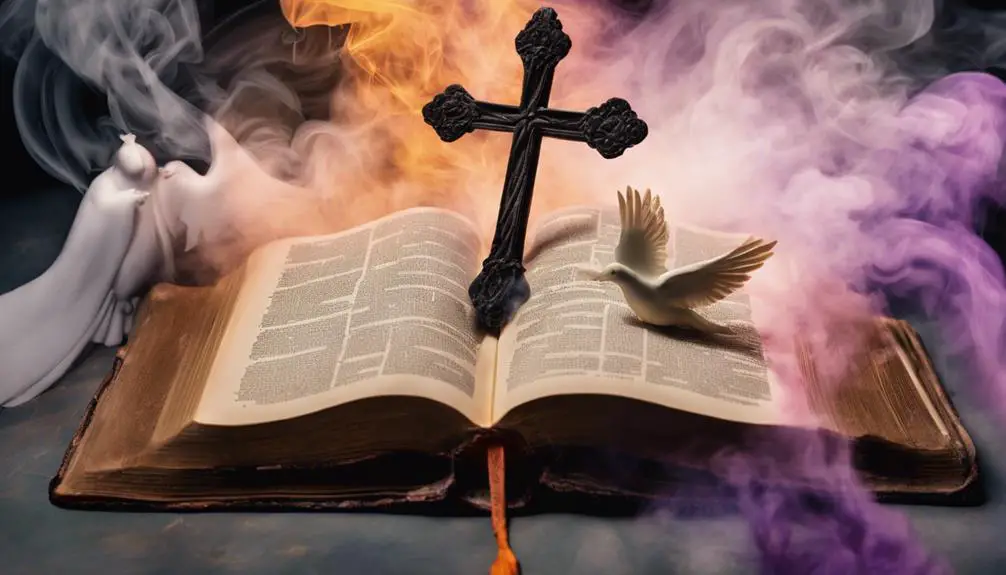
As you explore the symbolism of incense in biblical contexts, it's crucial to understand how it's interpreted across both Old and New Testament scriptures. Incense, in many instances, is depicted as a representation of prayer. This metaphorical illustration is found in Psalms 141:2, where it says, 'Let my prayer be set forth before thee as incense.' This verse underscores the symbolic connection between incense and the prayers of the faithful rising to God.
In the book of Revelation, incense is also associated with the prayers of the saints (Rev 5:8). The golden bowls full of incense are the prayers of God's people. This symbolism underscores the sacredness and potency of prayer in spiritual worship.
In the Old Testament, incense was an essential part of the temple worship (Exodus 30:34-38). It symbolized the people's dedication to God, their contrition, and their reverence. Burning incense was a physical act that demonstrated a spiritual reality – the offering of one's heart to God in prayer and submission.
These interpretations highlight the profound symbolism of incense in the Bible, enriching our understanding of biblical worship and spiritual devotion.
Conclusion
In conclusion, you'll find that the Bible indeed references burning incense in both the Old and New Testaments. It's often symbolic of prayer, worship, or purification. Interpretations, however, can vary, reflecting the rich complexity of the Biblical text.
Delving deeper into these verses can enhance your understanding of its historical context, spiritual symbolism, and theological implications. Keep exploring, and you'll uncover even more layers of meaning in this ancient and sacred practice.


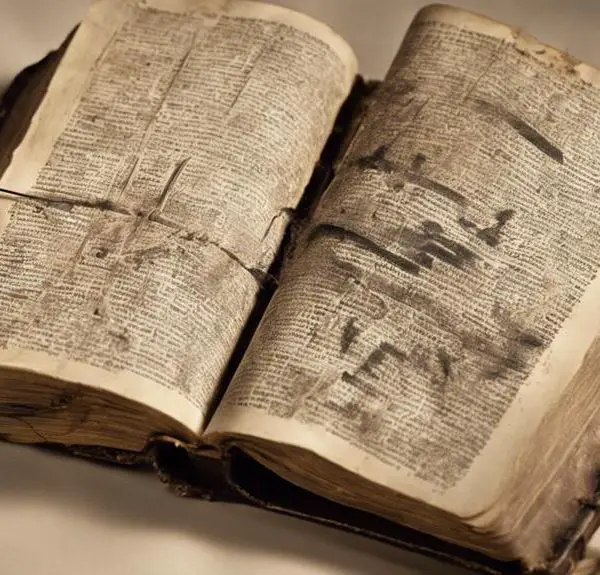
Sign up